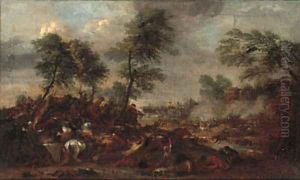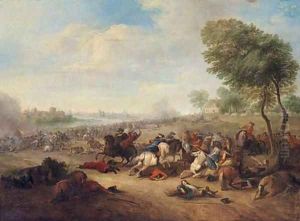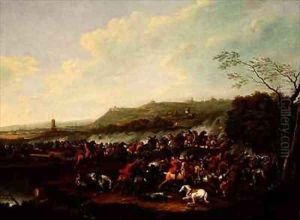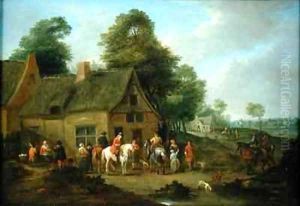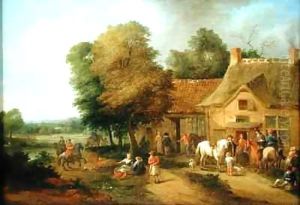Karel Bredael Paintings
Karel Bredael, born in 1678 in Antwerp, was a Flemish painter known for his skillful depiction of landscapes, cityscapes, and historical scenes. Hailing from a family with a strong artistic tradition, Bredael was destined to make a significant mark in the world of art. His father, Peeter Bredael, was also a painter, providing Karel with an environment enriched with artistic influence from a very young age.
Karel Bredael's early education in art was likely under the guidance of his father and possibly other local artists in Antwerp. This foundational period was crucial in developing his style and technique, which later became evident in his works. Bredael's paintings are characterized by their meticulous attention to detail, vibrant color palette, and the lively depiction of scenes, ranging from bustling city squares to serene landscapes.
After establishing himself as a promising artist in his hometown, Bredael ventured beyond Antwerp to further his career. His travels and experiences in other European cities, particularly in Italy, significantly influenced his artistic direction. The Italian landscapes and urban scenes added a new dimension to his work, contributing to the diversity and richness of his portfolio.
Throughout his career, Karel Bredael enjoyed considerable success and recognition. His works were sought after by art collectors and enthusiasts, not only in Flanders but across Europe. He was particularly admired for his ability to infuse his landscapes and cityscapes with a sense of realism and vitality, making them stand out among his contemporaries.
Karel Bredael passed away in 1739, leaving behind a legacy of artistic excellence. His contributions to the Flemish art scene of the 17th and 18th centuries remain significant, with his paintings continuing to be celebrated for their beauty and historical value. Bredael's work is preserved in several prominent museums and collections worldwide, serving as a testament to his enduring talent and influence in the realm of art.
